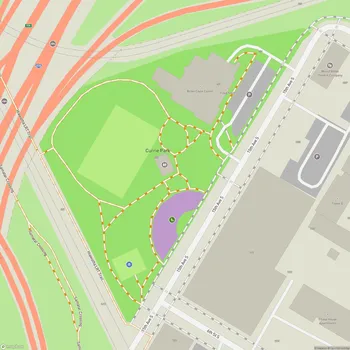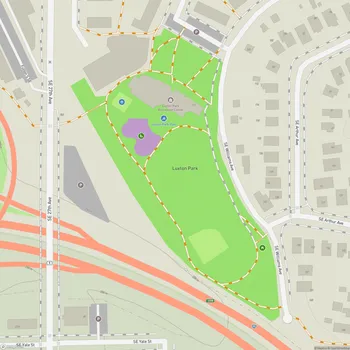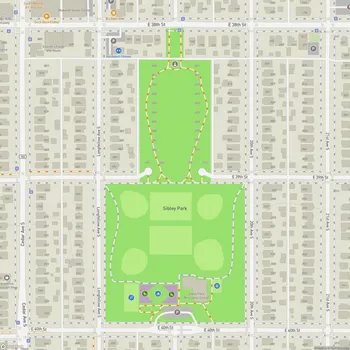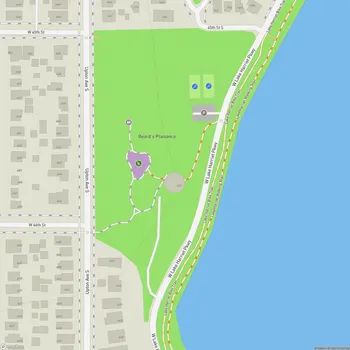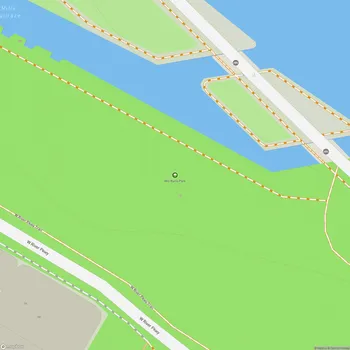Father Hennepin Bluff Park
Interactive Park Map
About Father Hennepin Bluff Park
River Views That Take Your Breath Away
Next to the east bank of the Mississippi River in Minneapolis, Father Hennepin Bluff Park offers a gorgeous 8-acre escape that feels worlds away from city life. This location is within the larger Central Mississippi Riverfront Regional Park and offers some of the most impressive views in the Twin Cities.
Here, you can wander through both carefully designed spaces on the bluff and more wild, natural areas including Hennepin Island and the river floodplain. The panoramic views of the Mississippi River, St. Anthony Falls, and the Minneapolis skyline? Absolutely worth the trip alone.
A Quiet Haven in the Heart of the City
What makes this park special is how it manages to be so peaceful despite sitting right in the middle of Minneapolis. There's something remarkable about finding such tranquility so close to downtown - the sound of rushing water drowns out the city noise, creating a peaceful escape from urban life.
Unlike some of the more popular downtown spots, Father Hennepin tends to stay relatively uncrowded. Visitors can usually find an empty bench with a prime view of the river, making it well-suited for those moments when one needs to clear their head or just enjoy some quiet time with the water.
A Place Where History Flows
The park takes its name from Father Louis Hennepin, a French explorer who in the 17th century became the first European to see St. Anthony Falls.
As you walk through the park, you'll notice interpretive signs that tell the story of the area's Indigenous history and environmental importance. You can learn about local history while enjoying the fresh air - a natural way to discover the area's past.
Trails and Wildlife Encounters
A notable feature of this park is its network of trails that connect to the iconic Stone Arch Bridge, Pillsbury Park, and beyond. These paths wind through wooded areas, alongside limestone bluffs, and all the way down to the water.
The park separates walking paths from bike trails, allowing you to enjoy the scenery without concerns about passing cyclists. Don't miss the charming wooden staircase that leads down into the more natural areas where you might spot great blue herons, beavers, or even snapping turtles going about their day.
The lower trail is less frequented - it's more rugged and brings you closer to the river, offering a sense of discovery within the city.
Fresh Face After 2023 Makeover
The park underwent renovations in 2023 that added a new performance stage with nearby restrooms, improved paths with better signage, and updates to the landscaping and stormwater systems.
These improvements have enhanced the space for various activities, from casual picnics to concerts and events like the Owamni Falling Water Festival.
The modern restrooms are a practical but much-appreciated addition, offering men's, women's, and all-gender facilities - all with changing stations for those visiting with little ones.
Gatherings and Good Times
While you won't find swing sets or slides here, kids seem to have no trouble creating their own fun in the sandy spots near the water. Occasionally, you might even find a community garden where you can pick fresh vegetables.
During the warmer months, the park transforms into an event venue hosting outdoor movies on a massive screen, artistic performances, and festivals that draw happy crowds looking to celebrate together in this beautiful setting.
Little Details That Make a Big Difference
Dogs are welcome here, making it a good spot for a scenic walk with your pet.
Designated picnic areas provide spaces for meals with a view, and there are food vendors near the Stone Arch Bridge end of the park if you need refreshments.
Father Hennepin Bluff Park balances natural beauty with historical significance, offering a space to experience both nature and the urban landscape.
All Features & Facilities
Nature & Wildlife
Water Features & Activities
Visitor Services
Food & Gathering
Photo Gallery
ParkMagnet Score
Good Park
Park Size
Opening Hours
Weather
Top Restaurants Near Father Hennepin Bluff Park
The Cabana Club
49 feet201 SE Main St, Minneapolis, MN 55414
Riverside restaurant offering globally-inspired cuisine with craft cocktails and scenic patio dining along the water.
Kramarczuk's Sausage Co. Inc.
0.2 miles215 E Hennepin Ave, Minneapolis, MN 55414
Authentic Eastern European restaurant serving traditional Polish and Ukrainian dishes with homemade sausages and pierogies.
Milly's Wine Bar & Bistro
0.4 miles1129 Washington Ave S, Minneapolis, MN 55415
A charming European-style bistro featuring an extensive wine selection, charcuterie boards, and intimate dining spaces.
Top Hotels Near Father Hennepin Bluff Park
Nicollet Island Inn
0.2 miles95 Merriam St, Minneapolis, MN 55401
Historic 19th-century boutique hotel featuring elegant rooms, fine dining restaurant, and charming piano bar.
